Skunk cabbage leaves came out of the ground preformed like rolled up cigars at least a month ago and they seem to be getting bigger by the day. Heck, they are so big now you can easily see them from the road as you’re driving.
Taking walks by the creek the last two weeks we saw many similar ‘rolled cigars’ that were just poking out of the ground, so at first we didn’t know what plant it was. The skunk cabbage leaves were already bigger than a dinner plate and obviously past their time of sprouting up out of the ground. Then, I looked down on one of the first of these plants to completely come out of the ground and knew that these spikes of vegetation were to become the aerial parts of Jack-in-the-Pulpit, Arisaema triphyllum.
Usually, you’ll see the striped hoodie and three leaves when you notice this plant.
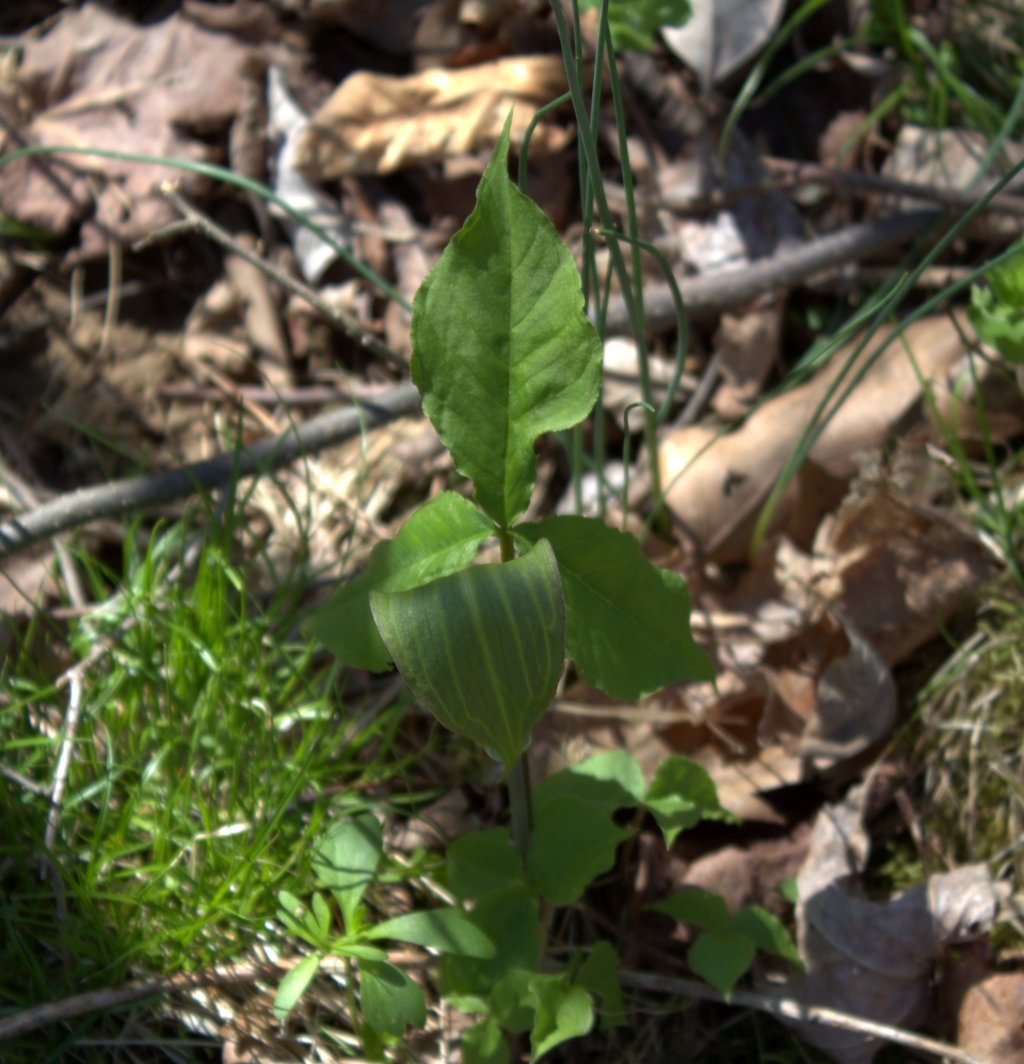
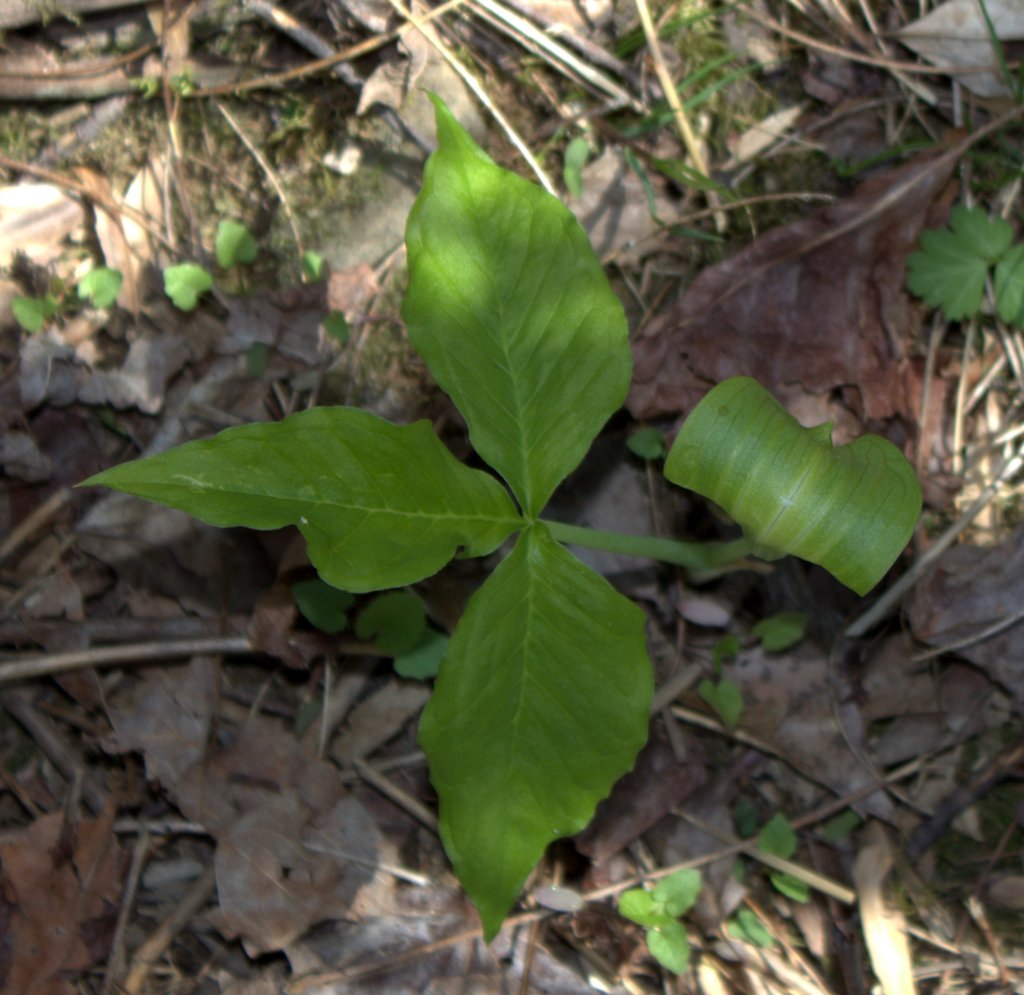
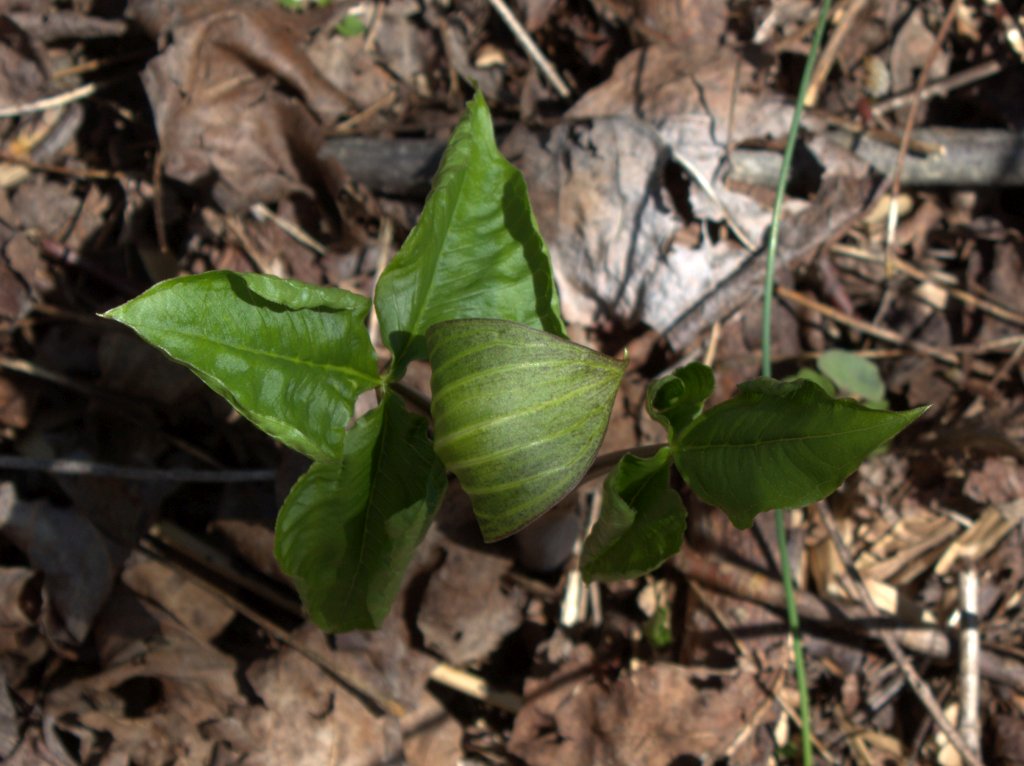
Looking down on Jack-in-the-Pulpit one sees the top of the folded over spathe and a tall leaf with three leaflets.
The striped “hoodie” is referred to as the spathe, which is a kind of shield or covering for the spadix or long flowering stem inside the spathe. The spathe is easily recognized as it looks like a folded over leaf when looking down on it. Together, the spathe and the leaves in triplicate tell us we’re looking at Jack-in-the-Pulpit.
Look near creeks or streams and in shady lowlands for Jack-in-the-Pulpit. We found the ones photographed here in a thicket next to the creek at Little Buffalo State Park.
Jack-in-the-Pulpit emerges from the ground in a protective sheath which envelopes the floral structures and leaves. Once freed from the confines of the ground one or two leaves will unfurl and attain their pointy shapes.
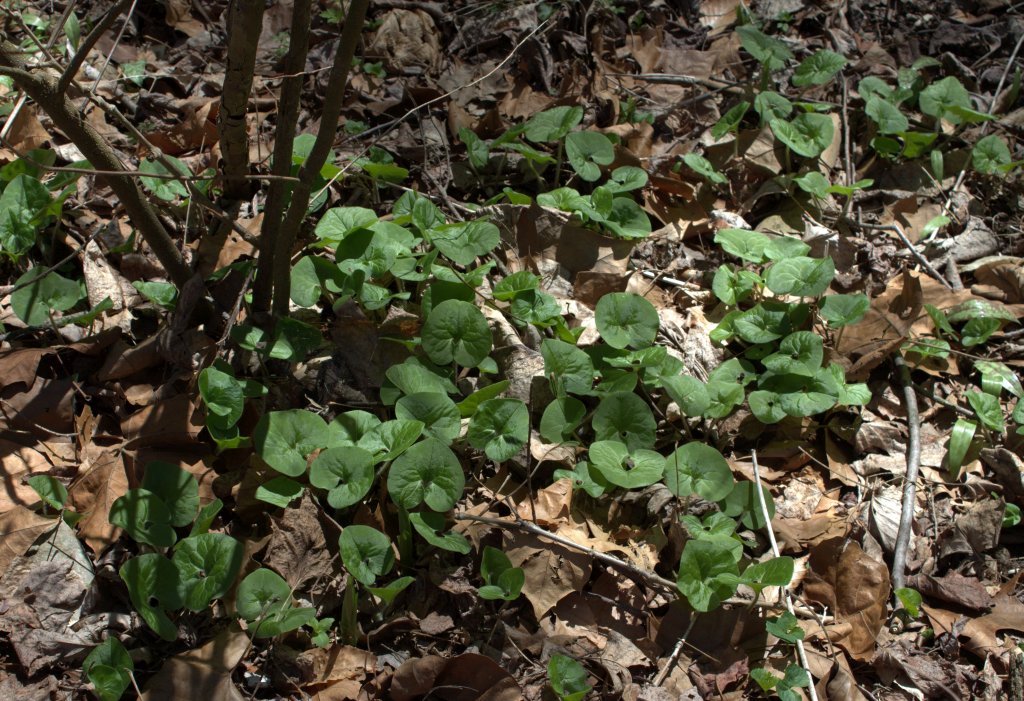
Wavy-edged, long-pointed leaves with three leaflets become taller than the spathe when fully developed. Some plants will have much shorter “baby” leaves clustered at the base of the plant.
There seems to be two varieties of our native Jack-in-the-pulpit. One type with dark stripes on the hood also has a dark spadix and dark brown sheaths. The other type has white or light stripes on the hood, a white spadix and a light-colored sheath. I have no idea if there is some significance to the color differences. Perhaps one type is found on older plants or perhaps these are known color morphs.
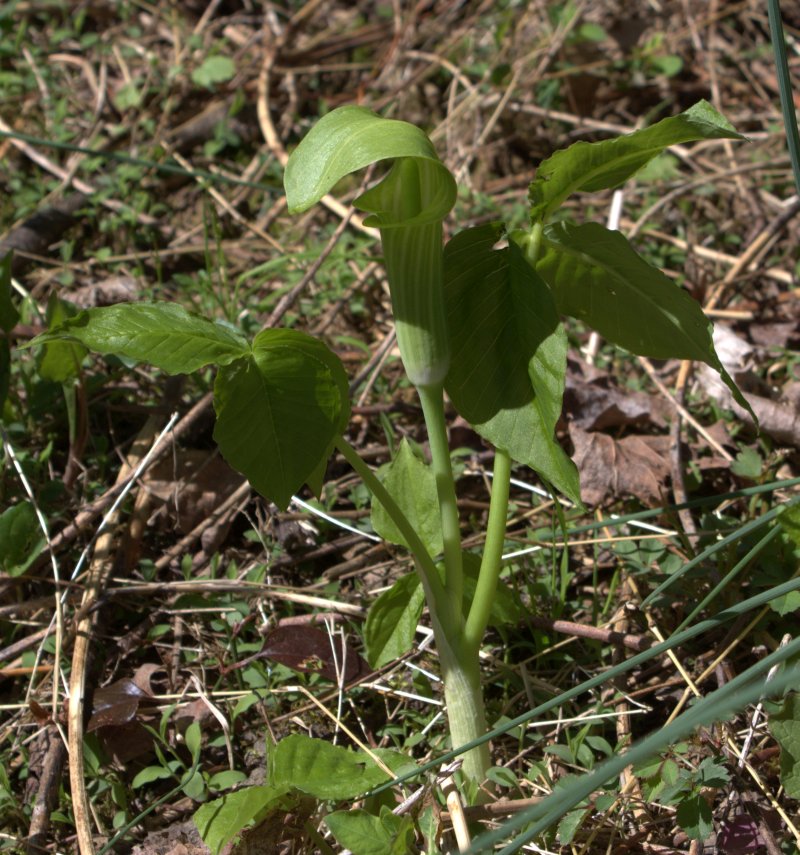
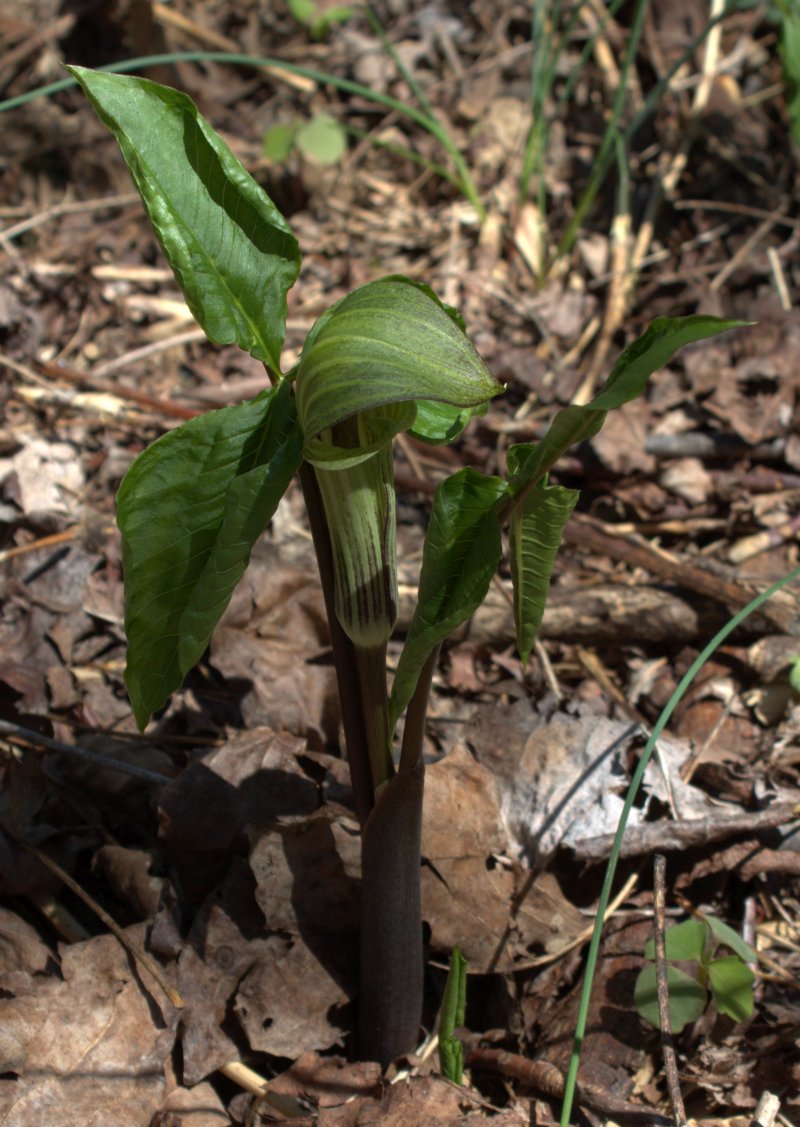
Not only is the brown coloration on the sheath and leaf stems, but also on the spadix and stripes on outside of the spathe. Striped pattern continues on the inside of the spathe.
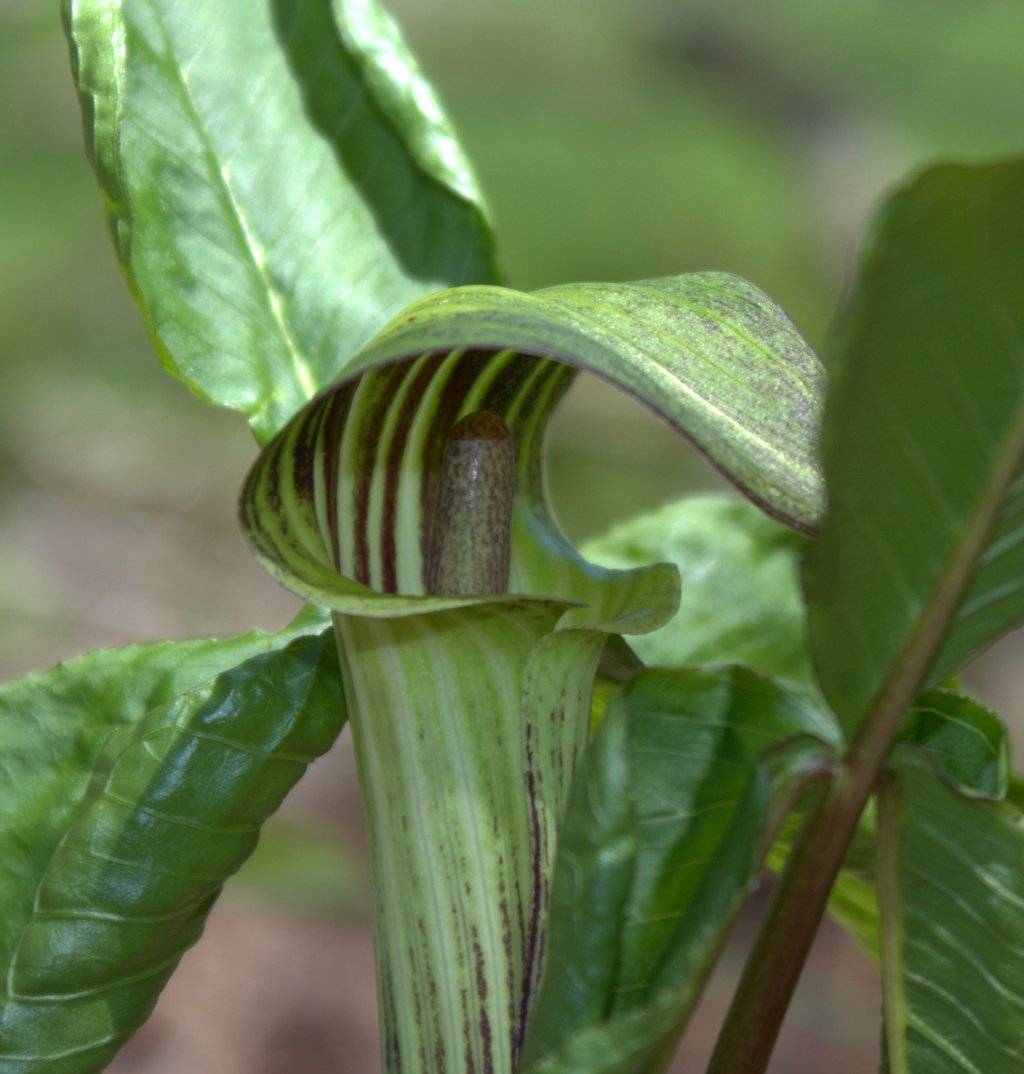
Can’t show these pictures without commenting on the strange shape of the “flower”. What most people refer to as the flower of Jack-in-the-Pulpit is the combination of spathe (striped hoodie) and spadix (flower stem). The flowers themselves are quite small, contained wholly within the pulpit, and remain out of sight. These tiny flowers are pollinated by small fungus flies.
We’ll have to wait until late summer or autumn to see evidence of fertilized flowers. The spadix will look quite different in the fall with many red berries present. The leaves and pulpit will have withered away by then, but the red berries are held in a cluster for the birds and other critters to relish.
Jack-in-the-pulpit plants photographed here were found growing in areas similar to that where the wild ginger flowered with spring beauties, yellow violets and miterwort. Photographs taken 6 May 2014 at Little Buffalo State Park near the creek.